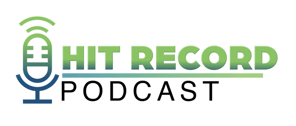Episode 10 - You're Not Sending Enough Emails


Don't Miss An Episode, Subscribe Now

Podcast Episode 10: The FI GROW team discusses why your bank or credit union isn't sending enough emails and how frequently they should be sent out.
Transcription:
Have you ever been talking about something that's really useful and thought, "That's a great idea, let's hit record so we can share this with everyone?” If you're looking for best practices for your bank or credit union, join us while we talk all things sales, marketing, and strategy for financial institutions. Let's make it happen with FI GROW Solutions.
Meredith Olmstead:
Hi, there it's Meredith Olmstead again with FI GROW Solutions. I am the CEO and founder of our agency. We work with financial institutions and I'm here with our chief of strategy, Penne VanderBush.
Penne VanderBush:
Hi everyone.
Meredith Olmstead:
And we were just having a great conversation about emails and about why our clients... We believe that our clients are not sending enough emails. So we wanted to hit record and really talk to you all today about why emails are important, how often you should be sending them, and why you're not bothering your list when you are emailing. So what do you think right off the bat Penne, do we have any real proof of this? I know we've been talking about this internally with our own emails, do we have any proof that more emailing is better?
Penne VanderBush:
Yeah. So we can talk about our internal emails here at FI GROW Solutions. We know for a fact that when we send out our monthly email versus our weekly emails we see nearly a 40% higher open rate on our weekly emails than we do on the monthly email. So we do have the stats to prove that even here at our own agency the more often that we're touching base with our list and letting them know about relevant information that they're consuming it, they're opening it, they're clicking on it. We know for a fact that staying in touch more often definitely produces higher results.
Meredith Olmstead:
Yeah. And definitely when you can keep that content relevant that's really the key of what we've seen. So if you can segment your list based on products that people are already using, or page visits that they've may have recently taken on your website, or a new product or service that they've just to added and you want to cross sell them on something related to that, that in and of itself makes the content of your emails more relevant to them. And so again, it makes it so that you can send more emails to those individuals because that content is something that they're going to find useful, interesting, specific to them as a user and as a customer.
Penne VanderBush:
Absolutely. And when you're capitalizing on data or behavior you're always going to be relevant, it's always going to be timely. We have emails that we trigger based off of page views for our clients when someone views a product page on the website, within 20 minutes they're getting an email about that product. And those emails have incredibly high open rates, a lot of clicks. And what's rare that we ever see an unsubscribe or a spam report on those because it's so timely and so relevant.
Penne VanderBush:
So there's key opportunities to use the data, but specifically behavior onboarding is another great example. Welcome emails are the emails at the beginning of an onboarding program, extremely relevant. Those are incredibly important to get right, to maintain that high open rate throughout the onboarding program. But it's because it's so relevant, they just opened the account and they're looking for that information. So I think that is done definitely key when we talk about frequency of emails.
Penne VanderBush:
Overlapping emails is okay as long as you're staying relevant. So if you have a monthly newsletter but you are sending say it's a quarterly promotion, it's auto loan season or mortgage season if you will so you're sending out emails about that, use the data that you have. If someone just recently got a mortgage in the last six months probably exclude them from your list, but as a general rule having your monthly blog subscription email, plus your monthly newsletter, or quarterly promotion email, in addition to behavior based emails, all of that overlapping is okay, because it's going to be relevant, important, and that don't worry too much about that overlap really is kind of the main message there.
Meredith Olmstead:
Yeah. I mean, we're not talking about spamming our contact lists as financial institutions.
Penne VanderBush:
Right.
Meredith Olmstead:
I mean we understand our place. We're not talking about eCommerce here, we're talking about banks and credit unions that are out there trying to bring useful, informative, educational content, as well as promotional content to their lists and to their existing customers and their existing lead base.
Meredith Olmstead:
And so we don't think you should be emailing people on a daily basis necessarily, or even multiple times a day, that could get a little bit crazy, but definitely on a weekly basis you need to be emailing your client list, your customer list. That way they're used to seeing your name in their inbox, it's relevant information, it's useful information. They know they're going to see it again next week so if they don't read it this week they just usually will delete it instead of unsubscribing, that kind of thing. Now if you do have... If a financial institution is going to make a shift from say a monthly email only, or monthly newsletter only, to adding in a weekly email, is there anything they should be looking out for, or are there any problems that they could face?
Penne VanderBush:
Yeah. So I think one of the things that is a little alarming, or maybe even disappointing to some folks, is that when you increase the frequency of the email, initially you're probably going to have more unsubscribes, or maybe some spam reports. And the reason for that is because you probably have a list of people who really don't engage with your emails that often. So all of a sudden you start popping up in their inbox more frequently, they weren't engaging with your past emails anyway, and then they're going to hit unsubscribe because they're going to say, well now that I'm getting so many, and I'm really not interested, maybe I'm not a member there anymore and I'm just still on this list, or whatever the reason may be.
Penne VanderBush:
So I would say expect to have more unsubscribes than you usually do, and maybe even a couple spam reports as you start to increase the frequency, but it will level out. And then you'll start to notice the higher engagement rates, higher open rates. I like to say that those are people you didn't really want on your list anyway, and probably weren't worth having in your CRM.
Meredith Olmstead:
Right. And the last thing I think we talked about was really making sure that you have a robust and solid email subscription page.
Penne VanderBush:
Yes.
Meredith Olmstead:
So making sure that when you start to kind of up your emails, that when people go and say manage my subscription or unsubscribe, they come to a page that has lots of options for them. That is really clear, that has bold type, that talks about the different kinds of emails that they're going to be subscribed to. Make sure you got system and technical emails pulled out there so that they understand hey look, I don't want to unsubscribe from everything, this is my financial institution, I need to get some account related updates from them.
Penne VanderBush:
Absolutely, yeah.
Meredith Olmstead:
But if I don't want to receive marketing updates anymore, or I want to be unsubscribed out of something like that that's more of a campaign level of unsubscribe options, you want to have that option.
Penne VanderBush:
Yeah, absolutely. I think the email preference page is the most neglected page on many websites. A lot of the times the developer you're working with has some canned version of it, or some template. Often they're pretty stark and they don't really offer much of a reason to stay subscribed, so I would say that's a really important page to outline the types of emails you're sending. And Meredith, you bring up a great point, you should definitely have at least one of those subscriptions where you're using maybe a bold font or all caps that says important system alerts. We highly recommend staying subscribed to important alerts about online banking, branch closures, etc. So there's at least one item on that email preference page that's strongly encouraging people to stay subscribed to at least that type of email for sure.
Meredith Olmstead:
Yeah, awesome. Well, thank you so much for having this conversation with me today Penne, and thank you.
Penne VanderBush:
Absolutely.
Meredith Olmstead:
Thank you all for listening. And if you're interested in finding out more, you can visit us at figrow.com. We also have a lot of great courses at Fi-Growth Academy. That's all linked from our menu there on the website, so please join us there and visit us again soon at the podcast. We'll talk soon and get out there and make it happen.








Blog comments